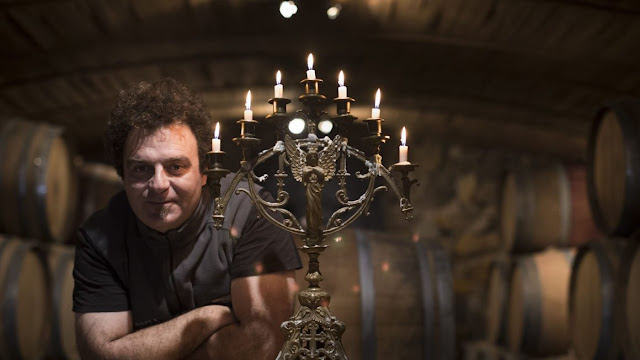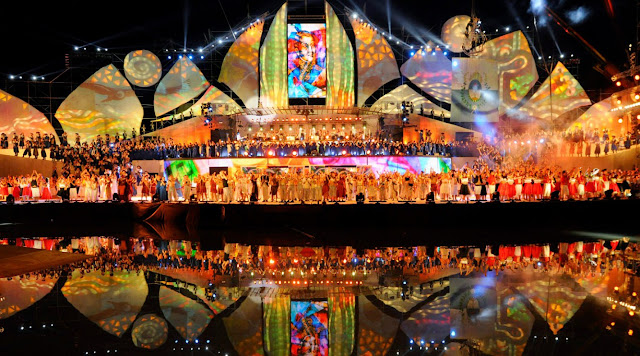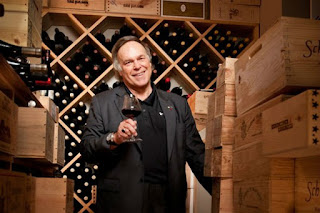Great Intimate Enemy
Alejandro Vigil and a journey through the history and present of the Great Single Vineyard Enemy to understand the concept behind their wines.
I remember that morning when I had my first contact with the Great Enemy. At that time, Chachingo's restaurant was not open on Sundays but Ale Vigil was waiting for me to talk about (and drink) wines. At a table for two and on those beautiful placemats with the emblem of The Enemy, a great display of glasses anticipated what would be an unforgettable talk. That day, as we toured the landscapes of Mendoza through its wines, Vigil gave me this phrase:
"My motivation is to put the landscape, with the particularities of the year, in a bottle."
Several years later, in a talk we had in the middle of the pandemic with the Argentina Wine Bloggers, Vigil repeated that phrase with the same conviction. A declaration of principles that gives us an idea of his way of thinking about wine and about which we will return at the end of this story.
The landscape in a bottle
The Enemy was born during a long night of talk about wine and history. That night, Adriana Catena (historian) and Ale Vigil (history enthusiast) decided that their wines would talk about Mendoza's identity and history.
"It was an idea we had with Nicolás Catena. He gave me the initial push and we ended up putting it into practice with Adriana. But the really disruptive thing was that, being the winemaker of Catena Zapata, I had my wine with Nicolás' daughter, and that both things could coexist perfectly. Ale Vigil, about the origins of El Enemigo".
The Enemy is a strong, controversial name that was resisted by the specialized journalism of the time and that even closed important markets to it: "In China we could not enter because wine is used as a gift, and with that name it is practically impossible", says Vigil. He refers to the greatest enemy facing human beings: their fears. Those fears that paralyze and prevent growth. It is his way of keeping in mind that when things are going well and the feeling of well-being leads us to inhabit the comfort zone, it is time to reinvent ourselves, to explore again and to take risks.
When the time came to make a Single Vineyard representing the different landscapes of Mendoza, Vigil chose Cabernet Franc, mainly because he finds many similarities with Malbec, "not in terms of flavors and expression, but in that interesting thing that depending on where you plant it and the development in the winery are totally different wines. Anyway, all the Great Enemies have between 10% and 15% of Malbec from the same vineyard... "and something else".
"I always try to find the Malbec in my wines. It is our flag and we have to be grateful for how it has positioned us in the world."
To better understand Vigil's vision, I invite you to tour his Great Single Vineyard 2016 vintage together:
Great Enemy Agrelo
Great Enemy El Cepillo
There is a discussion about whether the origin of El Cepillo is glacial rather than colluvial. The predominant rock is square and this characteristic is linked to the crushing produced by glaciers. Vigil does not agree with this theory: "El Cepillo is attached to the Cordillera Central and does not have as much slope, therefore the rocks when descending did not turn as much, and that is why they are more square than in other places with greater slope as they are, for example, Altamira or Gualtallary".
El Cepillo in a small area attached to Altamira that is divided into two: the part that has low slope suffers much with frost and in the highest slope, although they are frequent, are less intense. The latter is where the vineyard is located, from which the Great Enemy comes out, the last one planted in the extreme west of Uco Valley.
"My main enemies in that vineyard are the ants and the cows of the neighbors that get in to eat the grapes. The Brush is the most spicy of the four. It has a note of paprika that leads you to a cantimpalo or red chorizo. It is a characteristic that is maintained from harvest to harvest and should be attributed to the place."
Enemy Concept
The way the Great Enemy is made has to do with the idea of aging. "They are wines that I think are old and accompany meals. I love that pairing of gastronomy with well-aged wines", says Vigil and highlights the importance of oxidation:
"My idea is that the wines are totally oxidized before bottling. I oxidize the musts for a long time before fermenting and then I have them for a long time to stabilize environmentally in storage. In this way the wines can no longer oxidize more than what they have already oxidized in the cellar, a smooth oxidation is obtained and microbiological problems are avoided."
With the years in bottle the differences of zones will be accentuated. "The crops that best represent what I want to show from each place are 2016 in El Cepillo, 2014 and 2012 in Agrelo, 2017 in Gualtallary and 2018 in Chacayes". This brings us to that phrase from the beginning, "My motivation is to manage to put the landscape, with the particularities of the year, in a bottle", which summarizes his way of thinking about wine.
"My idea is to make wines without wood and without fruit. That has to do with looking at the landscape, because landscapes ultimately have no fruit. Our landscapes are of aridity, of mountains, snow, stone, rock, thyme".
Of course this is more conceptual than real, but it serves to understand that Vigil aims to make wines with less fruit and more minerality and structure. "I try to get closer to that concept by working more on the structure of the wine than on what accompanies that structure. I take into account the fruit, but it is not what will remain".
"In short, what will remain of the wine over time is its structure, which is the identity of the place. It's a more emotional concept than a real one, but it's where I think about my wines".
ORIGINAL NOTE: http://acercatealvino.com.ar/2020/12/28/gran-enemigo-intimo/
The cover photo and those of the Los Chacayes, Gualtallary and El Cepillo vineyards are courtesy of Alejandro Vigil.
WINE STORE
If you like you can buy pack x 6 bottles 750 ml of El Gran enemigo in our wine store.










Comentarios
Publicar un comentario